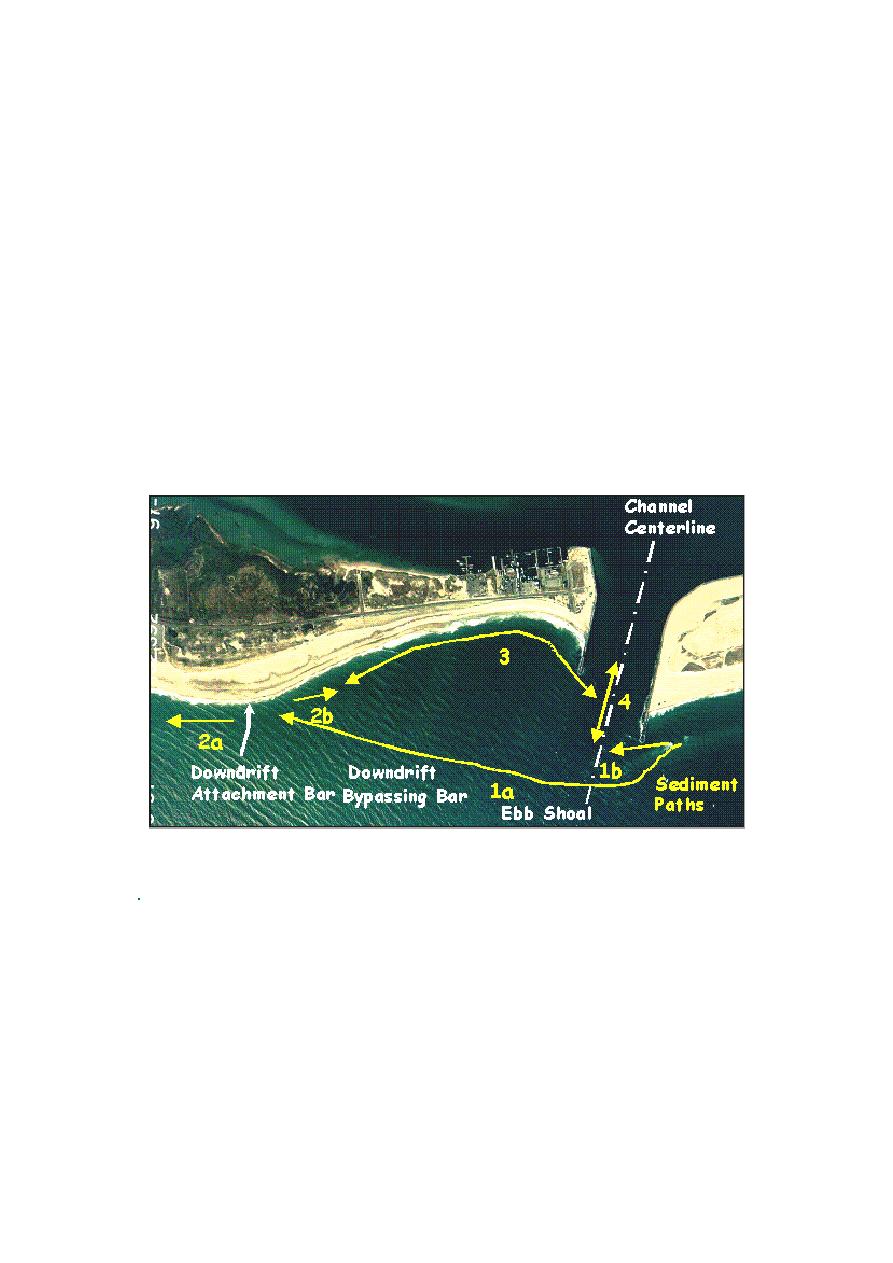
beaches will then begin to erode. The morphologic consequence of this abandonment is
called ebb-shoal collapse or deflation, and it is discussed further in Section 7.
Bruun (1995, 2005) distinguishes the near-field adjustment and far-field adjustment of
the down-drift shoreline at inlets. The near field is the shoreline reach between the
down-drift (and possibly up-drift) jetty and the attachment bar (Fig. 3) and at many
inlets near-field recession of the shoreline is chronic and requires special measures of
shore protection (Hanson and Kraus 2001). This erosion may thin barrier islands to the
point that breaching adjacent to the inlet is a concern. The far-field shoreline response
can extend many kilometers beyond the inlet. The existence and extent of the shoreline
adjustment depend in great part on (a) length of the jetties, (b) placement frequency and
location of material dredged from the channel or bypassed mechanically, (c) balance of
net and gross longshore sediment transport rates, and (d) elapsed time after jetty
construction. Shoreline-change numerical models can give an estimate of adjustment of
the shoreline to be expected. Such modeling must include the anticipated configuration
of the ebb-tidal shoal in the wave transformation.
Fig. 3. Inferred sediment pathways and chronically eroding, isolated down-drift beach
(area "3"), Shinnecock Inlet (from Hanson and Kraus 2001)
2. Formation of Ebb Shoal and Flood Shoal
Inlets are sinks of sediment through formation of ebb and flood shoals that are supplied
predominantly by longshore sediment transport. Creation or relocation of an inlet will
cause formation of new ebb and flood shoals. Likewise, modification of jetties, such as
lengthening one or both, or changing the distance between them, will alter the tidal
current and, therefore, the locations of the shoals. Because it is understood that jetties
interrupt longshore sediment transport, typically the material removed in cutting a new
inlet channel is placed on the down-drift beach or stockpiled to do so in the case of
highly variable longshore transport direction. As an example, Fig. 2 shows material
5




 Previous Page
Previous Page
